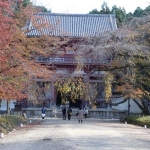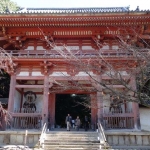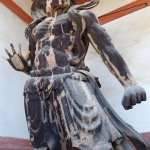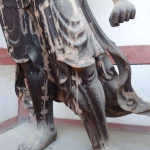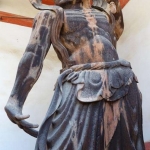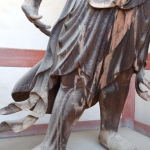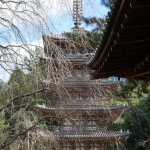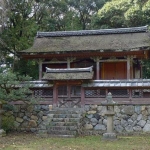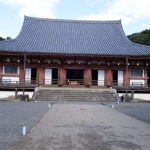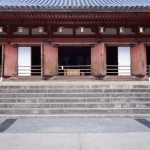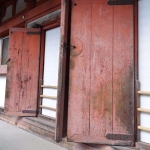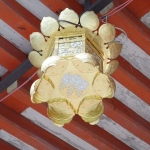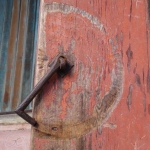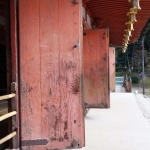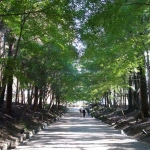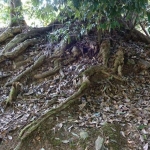Daigo-ji
Flowers in spring,
cuckoos in summer,
moon in autumn,
snow in winter,
serene and cool.
–Dogen
After spending the morning in Uji, I took a taxi to the Daigo-ji and Sambo-in Temples.
I first visited Sambo-in (Temple of the Three Treasures), revived by Toyotomi Hideyoshi at the end of the 1500s. The “Three Treasures Temple” refers to the three treasures of Buddhism: The Buddha, the Law and the Buddhist monastic community. It has one of the most luxurious of Momoyama gardens, especially in spring and fall.
While walking the path to the Nio-mon Gate with its two Deva Kings, shadows of trees appeared and disappeared on the walls along the path, and I experienced a profound sense of the impermanence of things.
According to temple legend, the founder Priest Shobo (Rigen Daishi, 832-909) saw a five-colored rainbow above a mountain the Yamashina Valley. He climbed to the top of the mountain where he saw a man drinking from a spring. The man said “This tastes like the finest milk.” Daigo means “the finest milk,” a Buddhist expression indicating the truest form of Buddhist teachings. The man, who was actually the god of the mountain, then gave this mountain to Shobo. Shobo’s small hermitage eventually developed into the center for the Shugendo, the yamabushi or mountain priest faith which combined Shinto mountain worship with forms of Buddhism.
Daigo-ji is a Shingon temple with an upper (Kami) and lower (Shimo) part on a hill one hour’s walk from each other. Though the complex was destroyed on several occasions by fire, the tenth-century pagoda survived together with the paintings it contained and is the oldest standing structure (from 951) in the Kyoto area.
Spend time viewing the picturesque Benten-do shrine at the far side of a series of ponds. As is usual with Shingon temples, it has protective Shinto shrines. Some are simple hokora (small shrines), but some are substantial. For those who wish to escape the crowds, here just 20 minutes from downtown is an opportunity to hike in the hills while enjoying World Heritage properties.
See website https://www.daigoji.or.jp/index_e.html


